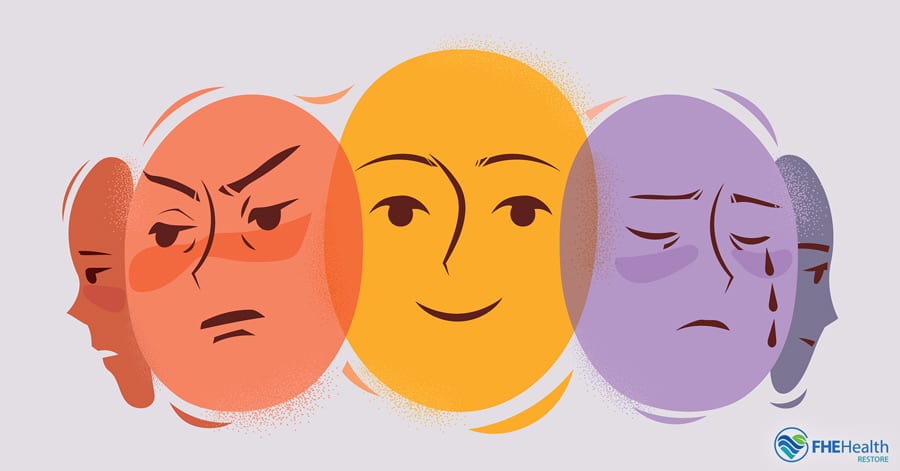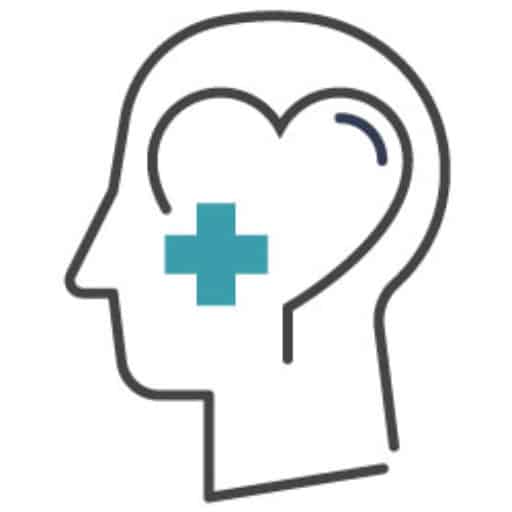Think you might be experiencing bipolar episodes? This article can explain how a bipolar person thinks and behaves. Read on to know more.
Bipolar disorder can be a confusing condition to understand. While popular media often showcases bipolar episodes as mood swings, the reality is more severe. Previously known as manic depression, bipolar disorder is a mental condition of extremes.
Do you feel like you experience higher highs and lower lows than others and want to understand how a bipolar person thinks? It’s okay to have questions about bipolar disorder, especially if you think you might be suffering from it.
Let’s start by diving a little deeper into what bipolar disorder is.
What Do Bipolar Episodes Look Like?
Bipolar episodes can be of two types: manic and depressive. People who have bipolar disorder tend to have episodes of mania and depression that last several days at a time.
Mania, or a manic episode, consists of feelings of extreme happiness, optimism and energy. You feel untouchable, like you’re on top of the world and nobody can hurt you. This can cause patients to make poor judgments and indulge in risky, embarrassing or dangerous behavior.
You can make bad decisions, such as spending excessive money on unnecessary purchases or making inappropriate comments to your loved ones without thinking of the consequences. If you’re in the middle of a manic episode, you’ll find it’s difficult to sleep, focus on tasks or follow a train of thought while speaking.
Do Bipolar People Know They’re Bipolar?
Probably not at first. It’s important to remember that when you have a manic episode for the first time, you may not realize what’s happening. Your colleagues or loved ones may notice something different or strange in your behavior, but you may be unwilling to accept that anything is wrong since you feel better than ever. However, this grandiose and heightened sense of self can quickly cause you to lose touch with reality and make decisions you regret later.
An episode of depression is the complete opposite. Symptoms of a period of depression include feeling deeply sad, hopeless or irritable for long durations and lacking the energy to carry out basic tasks. You may feel guilty for things beyond your control and be consumed by feelings of despair and emptiness.
In some depressive episodes, patients can become delusional, have hallucinations and lose the ability to think logically. In extreme cases, you may battle suicidal thoughts or feel the urge to self-harm.
Bipolar disorder affects everyone differently; some people may have frequent episodes of depression, while others experience more mania. While some people have rapid cycling of episodes, quickly switching from a high to a low phase, others may experience a mixed state. This is when a patient has depressive and manic symptoms simultaneously, for example, feeling depressed but being overactive.
In the time between extreme emotional and physical states, you may have some periods of a “normal” mood.
Who Is at High Risk of Developing Bipolar Disorder?
While science has not located an exact cause for bipolar disorder at this time, several factors can increase your chances of developing it.
Bipolar disorder tends to run in families, so if your parents or siblings have it, there’s a higher risk of you developing it as well. However, there’s no single gene responsible for bipolar disorder. Instead, a combination of genetic and environmental factors is thought to trigger it.
People of any age can be diagnosed with bipolar disorder, though it usually presents itself around the age of 25.
Chemical imbalances in the brain can cause a person experiencing bipolar episodes. Research shows that an imbalance in the levels of one or more neurotransmitters can be responsible for the development of bipolar disorder.
Some people develop bipolar disorder in response to a particularly stressful or traumatic event, such as the death of a loved one, physical or emotional abuse, overwhelming problems with making ends meet or a breakup or divorce.
Moreover, bipolar episodes can occur in conjunction with other illnesses, such as anxiety disorders, eating disorders, ADHD, psychosis or drug addiction.
Is Bipolar Disorder Treatable?
There’s no single cure for bipolar disorder, but it can be treated and managed with a comprehensive recovery plan. Your doctor can prescribe several treatment options, depending on your symptoms and their intensity. These include:
- Medications, such as antipsychotics, anticonvulsants, mood stabilizers and antidepressants
- Psychotherapy, which includes cognitive behavioral therapy (CBT) and dialectic behavior therapy (DBT)
- Tools to develop a network of friends and family who can support you on difficult days
- Holistic activities, including exercise, meditation and maintaining personal hygiene
- Building a healthy diet plan to regulate your physical well-being
- Eliminating drugs and alcohol from your life to reduce feelings of dependence and the risk of addiction
- Educational programs to help you learn more about your disorder and empower you to identify and manage its symptoms
In most cases, those suffering from bipolar disorder receive outpatient care without having to be admitted to the hospital. However, if your symptoms are severe or your doctor believes you may harm yourself or others, they may recommend that you get admitted to a medical care facility until you’re better.
The road to recovery can be long and tumultuous, and it’s important to stay focused on your goal of getting better. There are also many resources available to make your journey easier.
How Can You Get Help If You Think You Have Bipolar Disorder?
If you feel that you or someone you know has bipolar disorder, you can reach out via Restore Mental Health’s 24-hour hotline to discuss a treatment plan. Remember, it’s possible to live a normal, happy and healthy life with bipolar disorder if it’s accurately diagnosed and treated.
You can also start maintaining a chart to track your moods. Include as many details as possible, such as your sleep patterns, energy levels and reactions to different circumstances. This will help your doctor understand your symptoms and accurately diagnose the situation.
Don’t be afraid to speak up or ask for help. It’s never too late to take the first step to get your life back on track.



